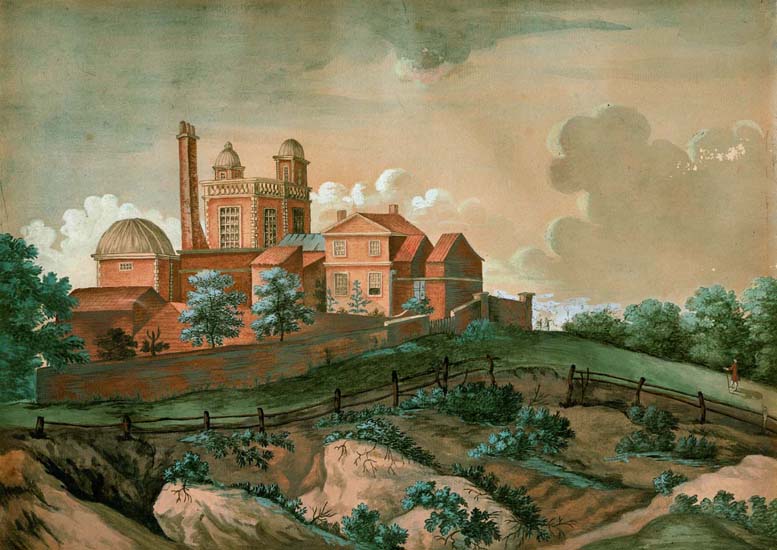
Fig. 1 – The Royal Observatory from the south-east, unknown artist, c.1770
{National Maritime Museum, Greenwich, London}
We have employed proper persons to compute a Nautical Almanac and Astronomical Ephemeris ... which will greatly contribute to make the Lunar Tables constructed by the late Professor Mayer ... more generally useful ...
Foreword to The Nautical Almanac and Astronomical Ephemeris, for the Year 17671
The 1765 Longitude Act had two main functions. First, it provided a statutory process through which to reward key individuals, such as John Harrison, who had developed successful ways to measure longitude. Second, it provided a way of investing in and supporting, for the foreseeable future, the two methods of finding longitude that had proved to be the most successful: lunar-distance and timekeeper. This strategy was not a way of hedging bets, or of supporting one method until the other was available for wider use, but was based on the view that they were complementary. Astronomical methods, though tricky to use, were the only means of finding longitude if it were lost and of checking that a timekeeper was working sufficiently well. They were also considered the more accurate methods, under ideal observing conditions and with many repetitions.
The new Act also recognized something of which the Commissioners had become ever more aware: the terms of the 1714 Act were insufficient for selecting a method that could simply be rolled out across the Navy. The Commissioners were conscious that they were dispensing large amounts of public money and were at risk of having little to show for it. The need for further work and investment had to be explained carefully to Members of Parliament, who might baulk at continued spending and fail to grasp why a successful trial did not mean the problem was solved.
For the lunar-distance method, successful implementation meant continually publishing predictive astronomical tables to ease the burden of calculation for the user. The 1765 Act therefore stated that to make Mayer’s ‘Lunar Tables more generally useful’, the Commissioners should
cause such Nautical Almanacks, or other useful Tables, to be constructed, and to print, publish, and vend ... any Nautical Almanack or Almanacks, or other useful Table or Tables, which they ... shall, from time to time, judge necessary and useful, in order to facilitate the Method of discovering the Longitude at Sea ...2
The bare construction of one single machine can never be said to discover the longitude.
From an anonymous letter to The Gentleman’s Magazine (1765)3

Fig. 1 – The Royal Observatory from the south-east, unknown artist, c.1770
{National Maritime Museum, Greenwich, London}
Nevil Maskelyne, now Astronomer Royal, was in a position to focus work at the Royal Observatory on the production of observations that would serve this purpose. On top of this, he directed the considerable calculating work required to turn raw observational data into usable tables, published as the Nautical Almanac. This was, as suggested in the British Mariner’s Guide, to be modelled on the tables for 1761 that had been computed by the French astronomer Nicolas Louis de Lacaille for the Connaissance des Temps.
The Almanac also supported the use of timekeepers at sea. Anticipating a future in which they were more plentiful, it provided information on how to take and process observations to establish local time, compare this to a timekeeper and check its going (that is, its speed and regularity), at sea or on land. However, there was much more to be done to make this method widely available. One watch – one very expensive, complex and slowly constructed watch – was of little use: the Commissioners had to know that Harrison’s work could be replicated. Harrison was, after all, now in his seventies and it was a very real possibility that his secrets might die with him.


Fig. 2 – The title page and one of the tables from The Nautical Almanac and Astronomical Ephemeris for 1767
{National Maritime Museum, Greenwich, London}
By this time, reflecting their more regular transaction of business, the Commissioners had become widely known as the Board of Longitude. Their collective decision, at a meeting on 9 February 1765, was that, although the watch had passed the trial, they could not be confident that it had solved the problem. Harrison would only be paid ‘upon his producing his Timekeeper to certain persons to be named by this Board & discovering to them, upon oath, the principles & manner of making the same’.4 Harrison vehemently disagreed, believing that, since his watch had performed as specified in the 1714 Act, he should immediately receive the full reward.
Ultimately, new watches would have to be made, with cheaper and simpler constructions. Maskelyne and the Royal Observatory were central to this process. The Astronomer Royal assessed ideas, dealt with makers, encouraged the spread of horological knowledge, oversaw trials of timekeepers at the Observatory and encouraged their use at sea. He and the Board also facilitated the exchange of knowledge about longitude methods across national borders. In continental Europe, astronomers and clockmakers had been engaged in similar researches, with their own networks of patronage and financial support. And in France, in particular, effective marine timekeepers were beginning to be produced.
Maskelyne and the Nautical Almanac
Working on behalf of the Board of Longitude, Maskelyne quickly created a system for producing the Nautical Almanac and Astronomical Ephemeris (Fig. 2). Within months of his arrival at Greenwich in March 1765, he had established the layout and content of each Almanac, providing information useful to astronomy, navigation and cartography, initially for a year ahead, and later for several years in advance. Work got under way, and the data for 1767 were ready to be printed by the end of 1766. As the Astronomer Royal told his brother, then living in India,

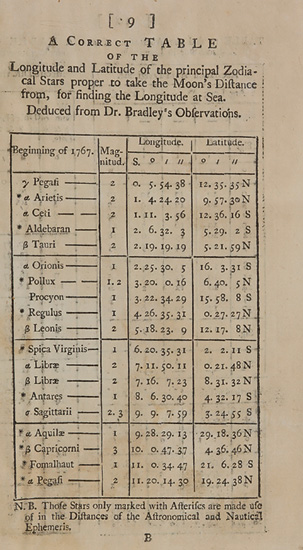
Fig. 3 – The title page and a page of tables from the Tables Requisite to be used with the Astronomical and Nautical Almanac (London, 1766)
{National Maritime Museum, Greenwich, London}
There will be 12 pages in every month. All the lunar calculation for finding the longitude at sea by that method will be ready performed: & other useful & new tables added to facilitate the whole calculation; so that the sailers will have little more to do than to observe carefully the moon’s distance from the sun or a proper star, which are also set down in the ephemeris, in order to find their longitude.5
It was not quite as simple as this sounded but the ‘ready performed’ calculation considerably shortened the process of establishing a reference time, in this case Greenwich time. The tables would also enable the establishment of longitudes on land, by observations of Jupiter’s satellites, and facilitate calculation of latitude and local time.
Maskelyne noted also that, to complete this endeavour, ‘The board of longitude have engaged persons to compute’ this ‘very complete nautical & astronomical ephemeris’.6 These were Israel Lyons, George Witchell, William Wales and John Mapson, and they were appointed on 13 June 1765. To ensure the accuracy of the calculations, these ‘computers’, as they were known, worked independently in pairs, so that the work of each member of a pair could be checked against that of the other. Lyons and Witchell worked on the data for January to June 1767, while Wales and Mapson covered July to December. The pattern of work for the next several decades was set when Richard Dunthorne was appointed ‘comparer’ to check the accuracy of each pair’s work and correct as necessary. Each computer and comparer was paid £70 for a year’s calculations, though this was soon raised to £75, probably because the slow, painstaking nature of the work became apparent.
Dunthorne also worked with Maskelyne to produce another volume, the Tables Requisite to be used with the Astronomical and Nautical Almanac (Fig. 3), which provided additional information that did not require annual updating. It aimed to be clear and helpful, explaining how to take observations, what instruments to use and how to apply the tables. Both this and the first edition of the Almanac were available from the printer on 6 January 1767. While the Board seems to have overestimated the market – of the 1000 Almanacs and 10,000 Tables Requisite printed, 242 and 6992 respectively remained unsold by 1784 – this was the start of a very long series. Maskelyne oversaw and edited forty-nine issues of the Almanac and three editions of the Tables Requisite. The publication of the Almanac continues to this day.

Fig. 4 – The John Bird transit instrument and astronomical regulator made by George Graham in the Royal Observatory, Greenwich, drawing by John Charnock, about 1785 (detail)
{National Maritime Museum, Greenwich, London}
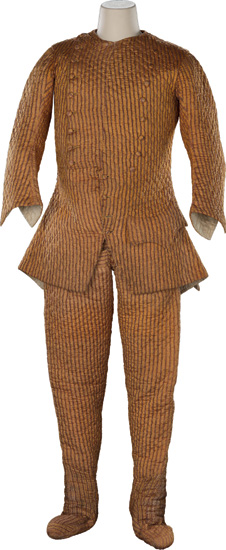
Fig. 5 – Nevil Maskelyne’s ‘observing suit’ of padded silk, probably designed to keep him warm during cold, night-time observations, about 1765
{National Maritime Museum, Greenwich, London}
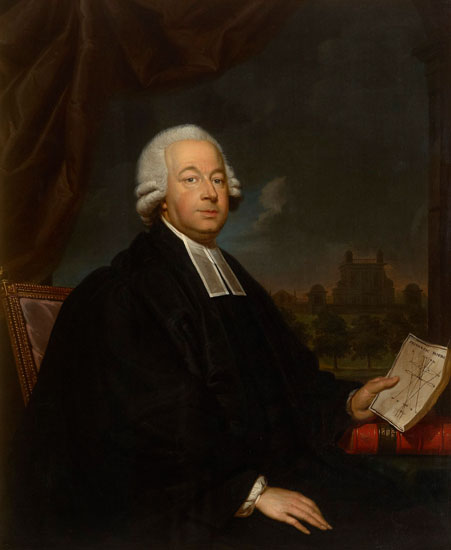
Fig. 6 – Nevil Maskelyne, by Louis François Gérard van der Puyl, 1785
{The Royal Society}
Maskelyne’s dedication and management were essential to the success of the process, although he did not receive additional income for adding the role of Almanac editor to that of Astronomer Royal. Other, paid, individuals were required to sustain the project. Closest to home were the successive astronomical assistants at Greenwich. Their priority was to assist with observing the Moon, measuring its height and timing the moment that it crossed the meridian of the fixed observatory instruments, such as the John Bird transit instrument and astronomical regulator made by George Graham (Fig. 4).
The transits of the Sun and planets were also observed when possible, as were lunar and solar eclipses and other conjunctions of the Sun, Moon, planets, satellites and stars. All of these could be used to establish and refine the measurement of the difference in longitude between Greenwich and any other location at which the same observations had been made. Stellar observations were largely limited to thirty-one (later thirty-six) stars that lie near the celestial equator, the imaginary circle in the sky that lies in the same plane as the Earth’s Equator. The stars chosen were bright enough to be viewed with a telescope in daylight and were spread across the sky. These stars were used to correct the observatory clocks and became known as ‘clock stars’. An overlapping group of ten bright stars, in addition to the positions of the Sun and Moon, were observed for tabulation in the Nautical Almanac.
Observations were generally carried out by astronomer and assistant together: Maskelyne’s padded silk ‘observing suit’ shows signs of significant wear (Fig. 5). As Astronomer Royal, he worked under rules that he had helped the Royal Society establish in the year before his appointment. The rules stipulated that he should not be absent for more than a few days without permission and that he must ensure that either he or his assistant were resident at all times. It had also become a requirement for copies of the observations carried out at the Observatory to be submitted annually to its Board of Visitors. They were later printed, thus beginning the regular series of Greenwich Observations. Maskelyne’s portrait shows him with the first edition of 1776, containing ten years’ observations (Fig. 6).
It was largely Maskelyne’s assistants who processed, or reduced, the observations into data ready for publication. It was tedious and poorly paid work and seems to have led to a high turnover of staff, so Maskelyne asked that their pay be increased. The rise from £26 to £86 must have been welcome, yet, as Maskelyne himself wrote, the role still required an individual with good eyes for the telescope, good ears for the ticking of the clock, a good constitution, and the ability to work on calculations several hours a day, get up at night and ‘bear confinement’.7 The role was often seen as an opportunity for excellent observational and mathematical training rather than as a long-term position.
Of the twenty-four individuals who were assistants during Maskelyne’s forty-six year tenure, many went on to become observers elsewhere, or teachers of mathematics, astronomy and navigation. Often benefiting from Maskelyne’s patronage, they helped to spread knowledge of the new longitude methods. Several former assistants either regularly or irregularly took on computational work for the Nautical Almanac and the Board of Longitude. Such work also added to the income of others with mathematical ability, good literacy, focus and a neat hand, including teachers, astronomers, ministers, surveyors and instrument makers. Such people had useful skills but often precarious careers.
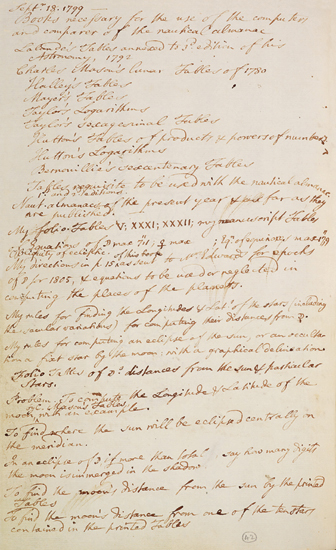
Fig. 7 – List of reference books required by the computers, compiled by Nevil Maskelyne in 1799
{Cambridge University Library}
Most of the methods they used had been outlined in the British Mariner’s Guide, although the computers and comparer undoubtedly helped refine them for production on a larger scale. Instructions were sent out by post, as were the work, queries, corrections and completed calculations. The computers were also sent a large number of astronomical and mathematical tables as reference tools (Fig. 7) that they needed to consult in order to process a set of observations. These books of tables belonged to the Board of Longitude, and Maskelyne was always careful to ensure their safe return if one of its employees ceased work.
While most of the computers were known or personally recommended to Maskelyne, they were geographically scattered. They were able to work from home and, often, in between other professional activities. Payment was organized by month of the Almanac computed, and Maskelyne became skilled at anticipating the rate of work and monetary requirements of his different computers, keeping a careful track of work as it was parcelled out (Fig. 8).
In December 1767 it was decided that the Almanac should be published three years in advance in order to provide for longer voyages. Maskelyne was authorized to recruit more computers, two of whom were Joseph Keech and Reuben Robbins. They evidently found that they had taken on more work than they anticipated, for they took the shortcut of copying each other’s calculations rather than working the same data independently. The comparer, Malachy Hitchins, proved his ability to detect errors or, in this case, suspicious regularity. Their cheating was revealed and the pair were dismissed and told to recompense Hitchins for his wasted time. Thereafter, Maskelyne made a virtue of the geographical spread of his computers, by making sure that each computer in a pair lived at a distance from each other. He obviously forgave Keech and Robbins, as they did further computing, but they never again worked on the same month’s data.
Maskelyne employed a total of thirty-five computers and comparers. By 1789, though, he was using only four – Mary Edwards, Henry Andrews, Joshua Moore and Malachy Hitchins – as the process became streamlined and the computers adept. The system and these loyal employees ensured that accuracy was largely maintained. Problems crept in after the deaths of Hitchins, who had been comparer for forty years, and Maskelyne, especially under the less strictly controlled regime of his successor, John Pond (1767–1836).
Many of the stories of individual computers make fascinating reading but Mary Edwards stands out as one of the few female contributors to this narrative. Even her name might have been lost, had she not outlived her husband. John Edwards was a Shropshire clergyman who lived near Maskelyne’s sister Margaret, Lady Clive, and probably became known to them after making his own telescope mirrors. He used his astronomical interests and mathematical skills to add significantly to his family income, receiving payment for work on six months’ worth of each Almanac from 1773 to 1784. However, it seems likely that he handed on much or most of the calculating work to his wife, for when he died the accounts moved seamlessly from ‘John Edwards’ to ‘Mary Edwards’.

Fig. 8 – List by Nevil Maskelyne of work allocated to computers and comparers in 1791–93 for the 1803 Nautical Almanac
{Cambridge University Library}

Fig. 9 – Date and signature on the upper plate of John Harrison’s H4 sea-watch
{National Maritime Museum, Greenwich, London, Ministry of Defence Art Collection}
It was unusual for women at this time to have had the mathematical knowledge and training to work as computers, but Mary may have been taught by her husband and must have had a natural aptitude. She, in turn, gained enough experience to help teach new computers, including her daughters, and after the death of Hitchins she was also able to take on work as a comparer. She worked fast and had a very low rate of errors. Earning under her own name, she increased her workload, computing twelve months of each year’s Almanac. As half of the whole computing power required annually, this was more than any of the other computers.
After Pond took over as editor of the Nautical Almanac in 1811, Edwards suddenly found her computing work being reduced and her comparing work stopped altogether. She petitioned the Board, which acknowledged her good work but did not reinstate her to the more prestigious position of comparer. She was, however, effectively paid a premium for twelve months’ calculations while only doing eight. Edwards died in 1815 but her daughter Eliza continued as a computer until 1832, when the work of the Almanac was consolidated and ceased to be the cottage industry in which the Edwards had specialized. As in other fields in the nineteenth century, such women had their earning power removed by changes to the organization of workplaces.
The ‘Discovery of Mr Harrison’s Watch’
The Nautical Almanac was intended to help make the new longitude methods ‘practicable and useful at sea’. This phrase in the 1714 Act provided the Commissioners of Longitude with much needed wriggle-room: it was decided that only with additional information could Harrison’s watch fulfil the intent of the Act. To deal responsibly with public money, the full £20,000 reward would only be paid when the Board was satisfied ‘that his method will be of common & general Utility’.8
As a petition put to Parliament in Harrison’s name back in 1762 had suggested, a ‘discovery’ of the watch should be made ‘in such manner as that other workmen may be able to Execute the same so that it may in a short time become serviceable to this Kingdom and to all who use the Sea’.9 Yet Harrison still hoped that he could be paid the full £20,000 and retain a monopoly on future manufacture. He told the Board that they could either give him £800 to make two more watches that would let him claim the second £10,000, or they could advance it and allow him to set up a factory and employ and train other workmen. The Board refused both options.
The disclosure of the mechanism of Harrison’s fourth longitude timekeeper, H4 (Fig. 9 and Chapter 3, Fig. 17), was to be witnessed by a reappointed Commission for the Discovery of Mr Harrison’s Watch, overseen by Maskelyne. These were experts whom the Admiralty could trust and individuals who might understand and reproduce the mechanism: mathematicians John Mitchell and William Ludlam; instrument maker John Bird; and watchmakers Thomas Mudge, William Matthews and Larcum Kendall. The ‘full discovery’ was to include explanation of the tools used, details of the methods of tempering the metals, and spoken, written and drawn descriptions of the mechanism. The Commissioners were aware of their responsibility to follow the description well enough to be able to report and, perhaps, make such a watch themselves.
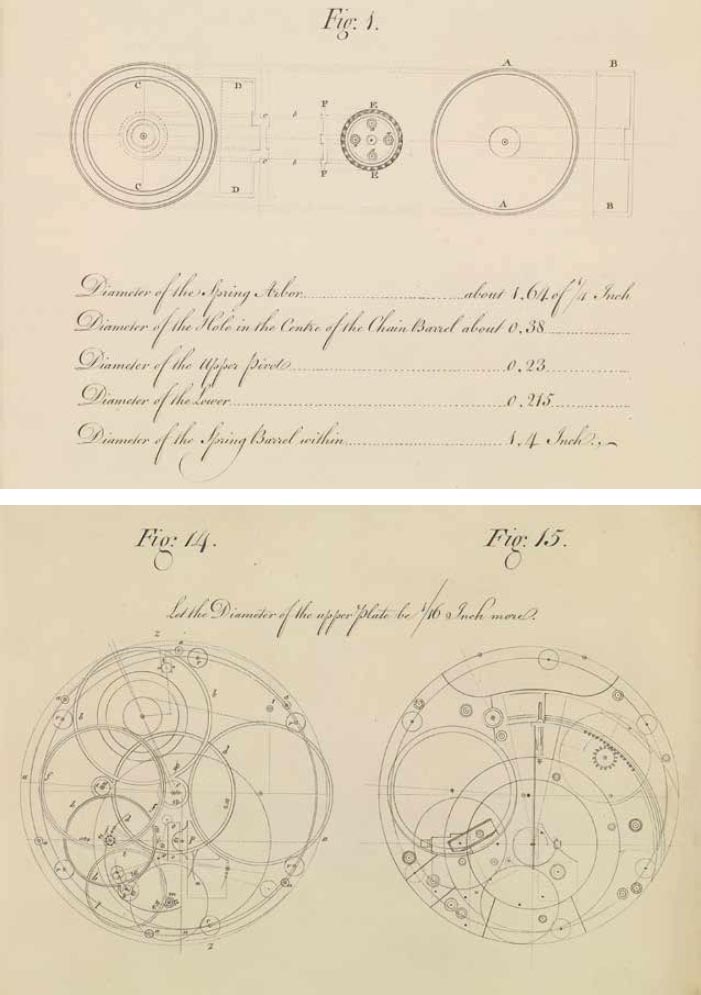
Fig. 10 – Drawings from The Principles of Mr. Harrison’s Timekeeper (London, 1767)
{National Maritime Museum, Greenwich, London}
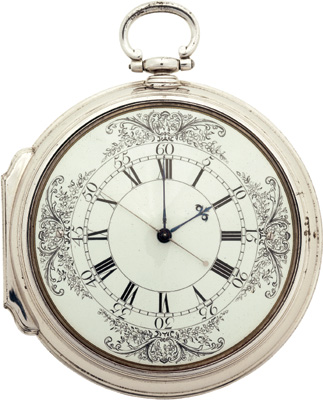
Fig. 11 – Marine timekeeper K1, by Larcum Kendall, 1769
{National Maritime Museum, Greenwich, London, Ministry of Defence Art Collection}
The disclosure took place in August 1765 at Harrison’s house and workshop in Red Lion Square. After six days of explanation and demonstration, the Commissioners declared themselves satisfied. Interestingly, though, four of the six – Ludlam, Mitchell, Kendall and Bird – would later express doubts over the adequacy of the explanation or the practicality of the watch. Ludlam suggested in print that the methods were not readily transferable, that the disclosure was incomplete, that Harrison had made adjustments by trial and error rather than by following a method, and that the watch’s temperature adjustment was inadequate.
Harrison handed his timekeepers over to the Admiralty, much against his will but as a long-standing condition of the rewards he had received so far. They would be taken to Greenwich for further trials – the beginning of the Observatory’s enduring role as a place for trialling, storing and checking marine timekeepers. In 1766, H4 was subjected to a ten-month trial against the Observatory’s astronomical regulator. The watch was wound daily, usually by Maskelyne, sometimes by his assistant, but always in the presence of an officer of Greenwich Hospital, where the key for one of the two locks on the box was kept.
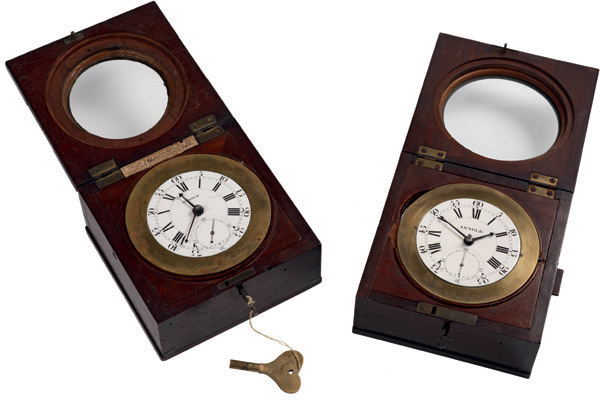
Fig. 12 – Marine timekeepers, by John Arnold, c.1771
{The Royal Society}
It did not perform well over this period as a whole, with its rate (the amount of time it gained or lost each day) appearing erratic. The trial appeared to show that, statistically, H4 was likely, but not certain, to perform successfully over the course of a six-week voyage. It also suggested that the corrections made to compensate for its rate would have to be frequently adjusted over the course of a longer voyage, especially in cold weather, making the watch less generally practical. Maskelyne found that it ‘cannot be depended upon’ to keep the longitude within a degree on a voyage to the West Indies, nor to keep it within half a degree for more than a fortnight, and it could be much worse if conditions were unfavourable. Nevertheless, he concluded that it would be ‘a useful and valuable invention’ that, used ‘in conjunction’ with lunars to check whether and by how much its rate changed over the course of the voyage, ‘may be of considerable advantage to navigation’.10

Fig. 13 – Horloge marine no. 8, by Ferdinand Berthoud, 1767
{Musée des arts et métiers - CNAM, Paris / Photo: S. Pelly}
Harrison attacked Maskelyne’s integrity in the conduct of the trial, his care of the timekeepers and his claims for lunar distances, accusing him of being ‘deeply interested’ in the lunar scheme. The clockmaker emphasized that, if the rate of the watch was regularly recalculated and compensated for, any six-week period of the trial, save those in extreme cold or where the watch had not been kept horizontal, would yield a result that was within the limits of the 1714 Act. Maskelyne did not disagree but this did not answer the greater question of whether the watch had solved the problem more generally: could it be used on longer voyages and in extreme conditions? Could another be made?
Harrison was, in the meantime, making a second watch but continued to complain about his treatment and about having to work under the new Act. His viewpoint was irreconcilable with that of the Commissioners. Ultimately he bypassed the Board and turned to Parliament and George III. The Board of Longitude also looked elsewhere. This did not mean they were prejudiced against or disbelieving of timekeepers as a viable means of finding longitude. Their investment in Harrison had been huge and they were not interested in letting it prove a dead end.
Making more timekeepers
As Maskelyne informed his brother in 1766, shortly after the arrival of H4 at the Observatory,
The board of longitude are also desirous to encourage the making of watches after Mr. Harrison’s method. They have engaged a person to make one. I have had the drawings engraved here under my eye, & shall publish them in a short space of time.11
The person engaged was Larcum Kendall (1719–1790), whom William Ludlam believed was ‘more likely to make such a Watch than any body of the Trade that he knows of’.12 Kendall had been apprenticed to John Jefferys and may have helped make some parts of H4, as well as having been present at its disclosure. He proposed to make a replica in two years for £450. It would be as identical as possible, ‘But I will not be answerable for its keeping time’.13 This proviso was inserted on Ludlam’s private suggestion that he make no guarantees that it would perform as Harrison’s had: ‘it might be good fortune in that case, & the thing never happen again’.14
The Commissioners did not, however, wish to rely only on Harrison and Kendall. Early on, Kendall had been instructed to let not only the Harrisons see H4, if required, but also any other ‘ingenious persons’ who expressed an interest.15 Another essential means of disseminating Harrison’s ideas was the publication of his drawings and descriptions in the 1767 Principles of Mr. Harrison’s Timekeeper (Fig. 10), edited by Maskelyne. Five hundred copies were printed, with translations into French and Danish appearing with astonishing speed. It was hoped that this would spark imitation and innovation in the design of timekeepers. The Board, therefore, continued to offer rewards for improved timekeepers, as well as other methods.
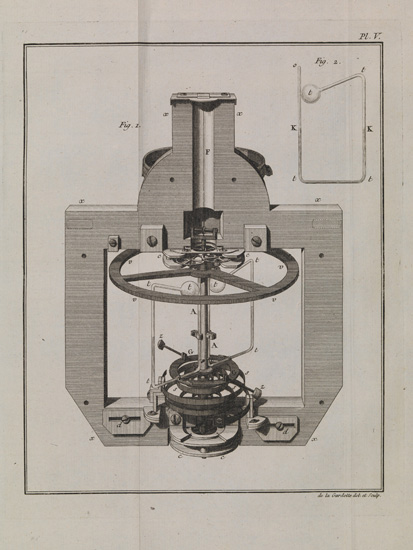
Fig. 14 – The balance assembly of Pierre Le Roy’s montre marine (marine watch) in Le Tellier, Journal du Voyage de M. le Marquis de Courtanvaux (Paris, 1768). The assembly incorporated temperature compensation with two adjustable balance springs below
{National Maritime Museum, Greenwich, London}
Kendall completed his copy of Harrison’s watch, today known as K1 (Fig. 11), and presented it to the Board on 13 January 1770. It was pronounced a faithful copy and Kendall was given both the £450 and a further reward of £50. He was asked to take on the task of instructing other workmen to make the necessary parts for further copies. On 26 May 1770, however, he demurred. There were ‘so many difficultys’ in the undertaking, he said, ‘I am well assured in my own mind; I shall not be able to do the publick any service’.16
What the Board wanted, Kendall understood, was a means by which ‘a Watch might in a short time be made for a reasonable price’. His view was that ‘it would be many years (if ever) before a watch of the same kind, with that of Mr Harrisons; could be afforded for Two hundred Pounds’. He explained that making more replicas would:
never answer [the Board’s ends] so effectually; as to make the watch become of publick utility. for unless a reduction; of the expensive parts of the Watch can be effected; & some method contrived, to facilitate the adjusting; the watch would still come to so high a price; as to put it far out of the reach of purchase for general use.17
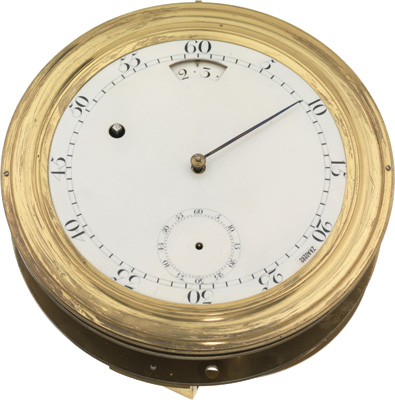
Fig. 15 – Marine timekeeper, by William Snellen, c.1775, and probably influenced by Harrison’s work
{National Maritime Museum, Greenwich, London}
Kendall told the Board that, instead of producing another copy, changes to Harrison’s design might allow him to make a watch that was just as good but less than half the price. This watch, K2 (see Chapter 5, Fig. 14), was delivered two years later. He explained his simplifications, adjustments and improvements, and claimed ‘my Watch is reduced to much greater simplicity than Mr Harrison’s and may be much easier adjusted; therefore may be made at a less expence’.18 Kendall expressed confidence in its performance but also indicated that he had come up with an even simpler design. The Board agreed to let him try, and K3 was delivered for £100 in 1774 (see Chapter 5, Fig. 17).
By the 1770s, the Commissioners were thoroughly focused on Kendall’s simplifications and the work of another maker, John Arnold (1736–1799). Although Arnold first came before the Board in 1770, it appears that Maskelyne had already singled him out as a talented workman who might be put to good use, for he had sent him a copy of The Principles of Mr. Harrison’s Timekeeper. At the same meeting at which Kendall said he could make a watch for £200, Arnold had shown his own timekeeper, claiming that with further work it might be made for just sixty guineas (£63). The Board was impressed enough to advance him £500 to continue with his work.
Arnold was clearly influenced by the published description of H4 in Principles, and certain details were copied directly from its engravings. He had also taken up hints from elsewhere, including Maskelyne’s report that Harrison thought his timekeeper would be better placed in a wooden box than a silver case. Arnold’s early marine timekeepers therefore look more humble than H4 or K1, although they included precision work (Fig. 12). They also contained a new type of detached escapement, known as a detent escapement – an idea probably borrowed from France – which was effective in reducing interference between wheels and balance, which Harrison himself had said was desirable. From 1771, after tests at the Royal Observatory, Maskelyne instigated plans to have these watches tested on James Cook’s second Pacific voyage, alongside K1.
The desire of the Commissioners to publish and share information contrasted sharply with Harrison’s instinct to protect his methods. When the explanation of his watch had first been mooted in 1763, members of the Board had even invited the French to send nominated experts to join the witnesses. The mathematician Charles-Étienne Camus and the clockmaker Ferdinand Berthoud (1727–1807) were selected and arrived in London. Since this planned disclosure did not take place, they attempted to get information directly from Harrison, making contact through the French astronomer Jérôme Lalande, who was then resident in London.
Harrison refused, both in 1763 and again when Berthoud returned to London in 1766. Industrial espionage, including attempts to transfer the secrets of the London instrument trade overseas, was a feature of the period, and artisans jealously guarded their secrets and access to their workshops. However, Harrison’s clocks were not a typical case of intellectual property. Berthoud was, therefore, able to get a description of the watch directly from Thomas Mudge when they met at the house of Count Bruhl, who also acted as interpreter. Harrison complained but Mudge explained that he considered this openness to be desirable: ‘I thought it my duty to do it, and that it was the Intention of the Board I should do so’.19 He had also shared the information with ten to twelve English workmen.
Berthoud’s personal qualities stood in marked contrast to Harrison’s and were, it would seem, distinctly more amenable to and in accord with the mores of the Paris and London scientific academies. Berthoud, Camus and Lalande were all elected as fellows of the Royal Society in 1764, and it is notable that Berthoud’s election certificate, as well as mentioning that he had been chosen to witness the much negotiated ‘discovery’ of H4, stresses the fact that he had published several books describing his work on marine timekeepers, had willingly shown his clock to the Académie des Sciences and had deposited it with their Secretariat.
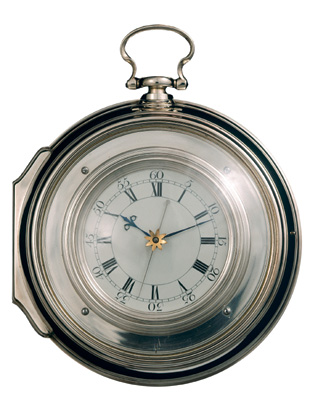
Fig. 16 – Marine timekeeper H5, by John Harrison, completed 1770
{The Trustees of the Clockmakers’ Museum}
Berthoud did not gain sufficient information to make watches like Harrison’s, despite his conversation with Mudge and possession of Principles. It is possible that the tight-knit clockmaking circles of London shared an understanding of Harrison’s work and skills that the clockmakers of Paris could not. Certainly Harrison’s descriptions were no help. The clockmaker Charles-Pierre d’Evreux de Fleurieu reported that ‘he had veiled his works so as to let them be seen without that it is possible to copy them’.20 It is likely, though, that Berthoud would not have followed Harrison’s path even if he could. The quality and accuracy of his marine timekeepers has sometimes been questioned but his focus, during a long and successful career, was on producing a good number of sufficient timekeepers rather than a small number of exquisite ones (Fig. 13).
Berthoud was one of two clockmakers working on marine timekeepers with support from the French king, government and Académie. The other, his senior, was Pierre Le Roy (1717–1785), who, over time, succeeded in producing timekeepers incorporating three elements that horologists consider essential to the later development of the chronometer: a detached escapement, temperature-compensated balance and isochronous balance spring (that is, one that transmitted its driving force at absolutely regular intervals) (Fig. 14). However, his clock designs managed to be both too large and insufficiently robust for practical use, contrasting with Berthoud’s focus on utility. While the success of Harrison’s watch had depended on a high-energy balance that produced long, fast oscillations, Le Roy’s clocks had a large balance, with short, slow oscillations, and even his petites rondes– small timekeepers within gimballed boxes, produced from about 1771 – had, like most watches, a low-energy balance that was too easily disturbed by motion.
Neither Le Roy’s nor Berthoud’s timepieces owed much to Harrison’s designs. Just as the French had shown the way with the publication of astronomical tables for navigation, they had a long record of research and investment in the timekeeper method. Le Roy and Berthoud had begun their research in the 1750s, were trialling timekeepers in the 1760s and received rewards in the 1770s, expending significant energies along the way on battling each other over who had invented what and who was the more deserving of patronage, titles and commissions. Le Roy seems to have been the more difficult character, although he is credited for the originality of his work. Berthoud managed his negotiations better and was always ready to share and publish his ideas. Equally, he borrowed from others, but his focus on strength, usability, simplicity of manufacture and ease of repair were arguably more important. He was able to produce seventy timekeepers, many of which were used on voyages of exploration.
Knowledge of British and French work in marine timekeepers circulated widely in European maritime spheres. Harrison’s Principles may, for example, have influenced a watch made by the Dordrecht instrument maker William Snellen in the 1770s (Fig. 15). This watch contains elements reminiscent of Harrison’s work, although its construction is very different. In many countries, however, attempts to manufacture marine timekeepers did not take off until the late eighteenth or nineteenth century and even then sometimes unsuccessfully. The British makers had made a head start and, for some time yet, those wishing to purchase instruments of the highest quality would largely look to London.
The end of the Harrison affair
Although he had spoken of working on timekeepers in the plural, John Harrison, now in his late seventies, succeeded in making only one more marine watch, known as H5 (Fig. 16). Taking a new initiative, the Harrisons made contact with Stephen Demainbray (1710–1782), astronomer at George III’s private observatory at Kew, and requested a trial there. Demainbray raised the issue with the King in January 1772, and William Harrison was invited to Windsor. Long after the event, John Harrison’s grandson, also called John Harrison, reported that George III had then exclaimed, ‘these people have been cruelly treated’ and, ‘By God, Harrison, I will see you righted!’21
The meeting led to a trial of H5 at the Kew Observatory from May to July 1772. As with the sea and Greenwich trials of H4, the watch was placed in a box with more than one lock, to prevent tampering. In this case it was Demainbray, William Harrison and the King who were to be present for the comparisons with the regulator clock at noon each day. After a false start, which has rather unconvincingly been attributed to placing it too close to some lodestones, the watch performed impressively. The recorded daily rate of variation over the whole ten weeks, which saw fairly constant temperatures, has been averaged out at less than a third of a second per day (Fig. 17).
With one last crack at the Board of Longitude, Harrison sent a communication that was discussed at their meeting of 28 November 1772. This covered much old ground but added the new results for H5, showing ‘(as he alledges) it went very considerably within the ... nearest Limits prescribed’ by the 1714 Act.22 He hoped thereby to receive the remainder of the large reward. The Board called in William Harrison and stated that they saw no reason to change the agreed approach, which required an official trial. At this same meeting they took up Kendall’s offer to construct his third watch and heard that John Arnold was keen to have two more of his timekeepers tested. K1 and three Arnold timekeepers were concurrently undergoing the most rigorous of tests on board Captain Cook’s ships Resolution and Adventure.

Fig. 17 – Concluding page from the record of H5’s Kew Observatory trial, by Stephen Demainbray, 1772 (detail)
{King’s College London}
William Harrison, however, continued to have the ear of the King, as suggested by a 1773 letter in which he claimed ‘to lay before His Majesty every Tuesday everything which I have done, and I do not write one word or take one step without acquainting him with it’.23 It was thus presumably through the King’s influence that they approached the Prime Minister, Lord North and the Secretary to the Treasury, John Robinson. The Harrisons’ petitions asked for ‘bare justice’. Their long-standing paranoia about Maskelyne remained, and they raised objections to the role that he would play in further tests as he had ‘every Tie of Interest’ and ‘stands pledged to crush the Invention’.24
A petition was presented to Parliament on 2 April 1773, again blaming the Commissioners and asking for the second £10,000. Meanwhile, William Harrison was asked by the Board of Longitude why he and his father would not make another timekeeper, or consider submitting H5 to trial under ‘two or more persons (to whom you have no objection)’. The Board minutes note his reply as: ‘Loss of time, Expense attending it, Uncertainty of reward afterwards and I think I can employ my time better’.25 The breakdown in relations was complete.
Harrison’s petition was debated on 27 April. When Lord North outlined the Board’s concerns, the Whig leader, Edmund Burke, replied with a rousing defence of this ‘most ingenious and able mechanic’, who had, ‘according to the verdict of the whole mechanical world, done more than ever was expected’.26 Harrison was, however, advised that the Board had acted legally and so he substituted a new petition that simply called for generosity and assistance. Lord North reported that the King supported this petition and, on 1 July 1773, an Act awarded Harrison a sum not exceeding £8750 for his decades of dedication, ‘as a further Reward & Encouragement over & above the Sum already received by him’.27 This decision took the total amount of money that Harrison had received from government above £20,000 but it also ensured that this payment was less than the £10,000 potentially offered under the 1765 Act.

Fig. 18 – Medallion portrait of John Harrison by James Tassie, c.1776
{National Maritime Museum, Greenwich, London}
Doubt therefore remains, and opinions are divided, over whether it can be said that Harrison had finally won the large reward offered under the 1714 Act. Harrison could stress that, if you added all large and small rewards, he had received at least £20,000 and so the large reward had been paid. However, on other occasions, he also argued that much of this money had been for expenses and that he should still be given the additional £1250 allowed under the 1765 Act. It seems clear that Parliament did not want to be seen to be overruling the decisions of the Board or the legally enshrined conditions of the 1765 Act and, to be sure, £8750 was a very large sum for an expression of the nation’s gratitude for Harrison’s work.
Many have argued that Harrison should have received £20,000 fair and square after the Barbados trial and before the passing of the game-changing 1765 Act. The Board had chosen to worry about whether or not that trial had shown that Harrison possessed a practicable and useful method that would benefit the public. The question remains: were the Commissioners acting unfairly, being over-conscientious or doing their public duty? Was the ‘Harrison method’ that was on trial simply a single timekeeper that proved capable of doing the job, or was it the means of making a successful marine timekeeper? If the latter, success could only be proved by making more of them.
The Board of Longitude had, as much as possible, extracted information from Harrison and stepped away from his ongoing complaints. However justified Harrison may have been in his interpretation of the 1714 Act, the Commissioners were concerned about the accountability of their actions and were at the end of their collective tether in dealing with him. Different expectations about the need for openness played their part, although it appears that there were problems communicating with Harrison that did not arise with other clockmakers. Harrison had difficulty expressing himself and his son is widely regarded as having been an unpleasant individual. Their increasing suspicion, together with the Commissioners’ sense that they could now get better results by looking elsewhere, led to the end of a long relationship. Nevertheless, Harrison died a wealthy man on 24 March 1776 (Fig. 18).
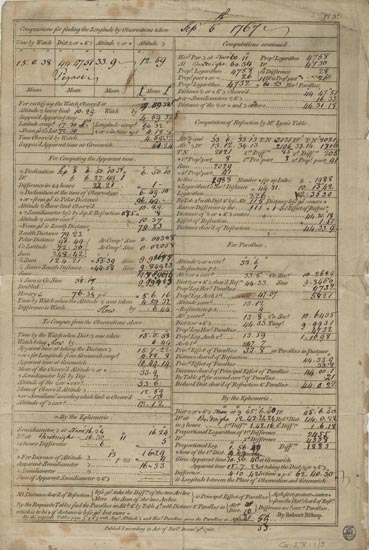
Fig. 19 – Printed lunar-distance form, published by Robert Bishop, 1768
{National Maritime Museum, Greenwich, London}
As the Nautical Almanac and timekeepers became, to a greater or lesser extent, more widely available, there was increasing interest in facilitating their use. Getting the new techniques on board at least a few ships, to be used and demonstrated by individuals trained in astronomy and mathematics, was an important initiative. There were also ongoing attempts to develop simplified astronomical and calculating methods, with Maskelyne soliciting and assessing ideas on behalf of the Board of Longitude. One approach was to provide printed forms that guided the user through the calculations and required significantly less mathematical ability (Fig. 19). There was also a recommendation from the Board in 1768 that Masters of Navy ships be required to attend the Royal Naval Academy at Portsmouth or selected London teachers for free instruction in how to use the Almanac and Hadley’s quadrant. It was suggested that their future postings should depend on being able to produce a certificate of attendance.
The Admiralty acted but it turned out ‘that great difficulties attend the obliging the old Masters of the Navy to perfect themselves in the use of those Almanacs’. They did not take kindly to the idea of compulsory land-based training and only fourteen Masters seem to have undertaken it in the two years following the Board’s suggestion. The Board recommended instead that the Admiralty ‘give such directions as they shall see fit for dispensing with such part of their said orders as related to the old masters and confining the same in future entirely to such new ones only as shall be henceforward appointed’.28
Despite Harrison’s accusations, the Commissioners do not seem to have expended more energy on promoting astronomical rather than timekeeper methods, although it was understood that the former were more readily available and an essential complement to the early use of timekeepers. They spent large amounts of time and money on making, simplifying and trialling timekeepers. If they were not yet doing more to facilitate their use on board ships, that was because they were still very rare and expensive items.
Even with the efforts of key Commissioners of Longitude, and the involvement of King and Parliament, it is worth recalling how little impact the debates and decisions of the 1760s and 1770s had on the wider public. Little had yet changed in maritime practice. William Emerson, an eccentric mathematician and inventor who published on navigation, wrote in 1770 that as far as most were concerned the longitude was:
still a secret, and likely to continue so. For tho’ many thousand pounds have been paid for the pretended discovery thereof; I doubt we shall still remain just as wise as we were before the discovery; except the ill success of it happens to teach us so much wit, as to take better care of our money for the future.29